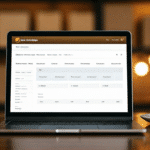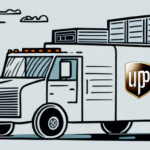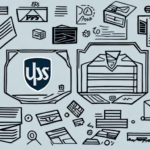Understanding UPS C.O.D. Fees: A Comprehensive Guide for Businesses
If you're a business owner who frequently ships packages using UPS, you've likely encountered the UPS Cash on Delivery (C.O.D.) fee. C.O.D. allows businesses to collect payment from customers at the time of delivery, offering a convenient payment method. However, this service comes with additional fees that can impact your bottom line. In this guide, we'll explore the intricacies of UPS C.O.D. fees, how they work, and strategies to manage and optimize these costs effectively.
What is the UPS C.O.D. Fee?
The UPS C.O.D. fee is an extra charge applied to packages shipped using the Cash on Delivery service. This fee is in addition to standard shipping costs and varies based on the total amount being collected from the recipient. Understanding this fee structure is crucial for businesses to accurately calculate shipping expenses and maintain profitability.
How Does UPS C.O.D. Work?
When a package is shipped using UPS C.O.D., the UPS driver collects payment from the recipient at the time of delivery. The collected funds are then transferred to the business owner, typically within 7-10 business days. The C.O.D. fee is calculated as a percentage of the total amount being collected, with the percentage increasing as the collection amount rises.
For example, a package with a C.O.D. amount of $100 may incur a fee of 3%, resulting in a $3 charge, while a package with a C.O.D. amount of $1,000 may incur a fee of 4.25%, totaling $42.50.
Importance of Understanding UPS C.O.D. Fees
For businesses that rely on C.O.D. as a payment method, comprehending the associated fees is essential to avoid unexpected costs and ensure smooth transactions with customers. High C.O.D. fees can erode profit margins, especially for businesses with large shipping volumes or high-value items.
Financial Impact
Frequent use of the C.O.D. service can lead to substantial additional costs. By understanding how fees are calculated and what factors influence them, businesses can make informed decisions about when to use C.O.D. and how to manage their shipping expenses effectively.
Customer Relations
Clear communication about C.O.D. fees with customers helps prevent misunderstandings and disputes. Including C.O.D. fees in pricing and clearly stating payment terms on invoices and shipping labels enhances transparency and builds trust with your customer base.
Calculating Your UPS C.O.D. Fee
Calculating the UPS C.O.D. fee involves knowing the total amount being collected and the applicable fee percentage. The fee percentage can vary based on factors such as the collection amount, destination, and type of payment method.
Here's a simple formula to calculate the fee:
UPS C.O.D. Fee = C.O.D. Amount × Fee Percentage
For example, if you're collecting $500 with a fee percentage of 3.5%, the calculation would be:
$500 × 0.035 = $17.50
Thus, the total UPS C.O.D. fee for this shipment would be $17.50.
Fee Percentage Tiers
UPS typically structures C.O.D. fees in tiers based on the collection amount. Higher collection amounts generally incur higher fee percentages. It's essential to consult the latest UPS C.O.D. fee schedule on the UPS official website or contact UPS directly for the most accurate and up-to-date information.
Factors Affecting UPS C.O.D. Fees
Several factors influence the UPS C.O.D. fee, including the value of the shipment, destination, payment method, package size, and shipping speed.
1. Shipment Value
The primary determinant of the C.O.D. fee is the total amount being collected. Higher collection amounts result in higher fee percentages.
2. Destination
International shipments or deliveries to remote locations may incur higher fees due to additional customs, handling, and transportation costs.
3. Payment Method
The method of payment collected can affect the fee. For instance, credit card payments might have higher fees compared to cash or checks due to processing costs.
4. Package Size and Weight
Larger and heavier packages may require additional handling and transportation, leading to increased fees.
5. Shipping Speed
Expedited shipping options often come with higher fees, affecting the overall C.O.D. cost.
Common Reasons for Unexpected UPS C.O.D. Fees
Businesses may encounter unexpected UPS C.O.D. fees due to various misunderstandings and oversights.
Misunderstanding Fee Calculations
Many businesses mistakenly believe that C.O.D. fees are based on package weight or size, when in reality, they are determined by the collection amount. This misconception can lead to underestimating shipping costs.
Incorrectly Declared C.O.D. Amounts
Inaccurate reporting of the C.O.D. amount can result in discrepancies, leading to unexpected fees or delays in payment processing.
Poor Packaging and Labeling
Failing to properly label packages as C.O.D. shipments can cause recipients to refuse payment, resulting in additional charges and return shipping costs.
Managing and Reducing UPS C.O.D. Fees
Effective management of UPS C.O.D. fees involves accurate calculation, strategic decision-making, and leveraging available tools and services.
Accurate Fee Calculation
Always verify the C.O.D. amount and applicable fee percentage before shipping. Utilize UPS's online calculators or consult with a UPS representative to ensure accurate fee estimations.
Alternative Payment Methods
Encourage customers to use alternative payment methods such as credit cards or electronic transfers, which can help reduce reliance on C.O.D. shipments and associated fees.
Volume Negotiation
Businesses with high shipping volumes may negotiate lower C.O.D. fees with UPS. Contact your UPS account manager to discuss potential discounts based on your shipping patterns.
Utilize UPS Tools
Take advantage of UPS's shipping tools and reporting features to monitor C.O.D. fees and identify trends or areas for cost reduction. Tools like UPS My Choice can offer valuable insights.
Communicating C.O.D. Fees to Customers
Clear and transparent communication about C.O.D. fees is essential to maintaining positive customer relationships and avoiding disputes.
Transparent Pricing
Include C.O.D. fees in your product pricing or clearly outline them during the checkout process to ensure customers are aware of additional costs.
Detailed Invoices and Shipping Labels
Provide detailed invoices and shipping labels that specify the C.O.D. amount and any associated fees. This clarity helps prevent confusion and ensures seamless transactions at delivery.
Customer Support
Offer accessible customer support to address any questions or concerns related to C.O.D. fees. Prompt and helpful responses can enhance customer trust and satisfaction.
Alternatives to UPS C.O.D.: Exploring Other Payment Options
While UPS C.O.D. offers a convenient payment collection method, there are alternative options that may better suit your business needs and help reduce fees.
Electronic Payment Solutions
Platforms like PayPal, Square, and Stripe allow businesses to collect payments online securely and efficiently before shipping products.
Pre-Payment and Invoicing
Implementing pre-payment or invoicing systems ensures that payments are received upfront, minimizing reliance on C.O.D. and associated fees. Tools like FreshBooks and QuickBooks can streamline invoicing processes.
Subscription Models
For businesses offering recurring services or products, subscription models can provide a steady payment stream without the need for C.O.D. transactions.
Conclusion
Understanding and effectively managing UPS C.O.D. fees is vital for businesses that leverage this payment method. By accurately calculating fees, exploring alternative payment options, and maintaining clear communication with customers, businesses can minimize costs and enhance operational efficiency. For the latest information on UPS C.O.D. fees and services, visit the UPS Business Services page.




















